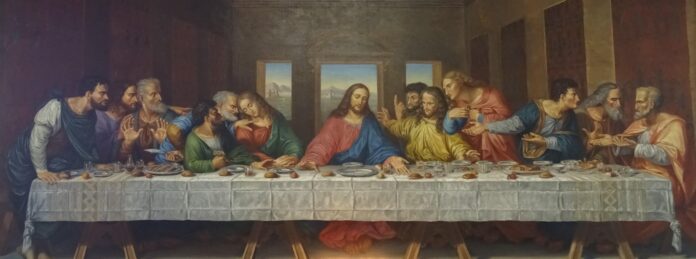Leonardo da Vinci’s The Last Supper is one of the most iconic and recognizable paintings in the history of art. This masterpiece has become a symbol of Renaissance culture, Christian iconography, and timeless artistic genius. In this article, we will explore the historical and cultural context of the painting. And its artistic features and symbolism, various interpretations and meanings, restoration and preservation efforts, and its enduring legacy.
The historical context of the painting
Leonardo da Vinci (1452-1519) was a renowned artist, inventor, and polymath of the Italian Renaissance. He worked in the court of Ludovico Sforza, the Duke of Milan. The Last Supper was commissioned by Ludovico as a fresco decoration for the refectory of the Dominican monastery. Which was situated in Santa Maria delle Grazie in Milan. It was intended to be a visual aid for the religious devotion of the friars and visitors. The painting was created between 1495 and 1498, during a period of great artistic experimentation and innovation in Milan. Which attracted many prominent artists and thinkers, including Michelangelo and Bramante.
Analysis of the painting
The Last Supper depicts the moment when Jesus Christ reveals to his disciples that one of them will betray him. As recorded in the New Testament accounts of Matthew, Mark, and Luke. Leonardo’s interpretation of the scene is characterized by its dynamic composition, dramatic lighting, and psychological realism. The figures of Jesus and his disciples are arranged in a triangular composition. With Jesus at the apex and the disciples in groups of three on either side. Jesus is depicted as a calm and composed figure. With his right hand pointing upward and his left hand holding a piece of bread, symbolizing his body. The disciples, on the other hand, are shown in various emotional states. Those are ranging from shock and anger to confusion and resignation. The painting’s chiaroscuro technique creates a sense of depth and volume through the use of light and shadow. This is used to enhance the dramatic effect of the scene.
Interpretations of the painting
The Last Supper has been the subject of numerous interpretations and debates, both religious and secular. Some scholars have focused on the religious symbolism of the painting. Such as the Eucharistic themes of the bread and wine, the symbolism of the hands, and the gestures of the figures. And the use of perspective to create a vanishing point emphasizes the centrality of Christ. Others have explored the psychological dimensions of the painting. Such as the facial expressions, body language, and interpersonal dynamics of the disciples. And how they reflect human nature and behavior. Some have also interpreted the painting in political and cultural terms. Such as its connection to the political and social context of Renaissance Milan. Or its influence on later art movements and popular culture.
Restoration and preservation of the painting
Over the centuries, The Last Supper has suffered various damages and neglect. Due to factors such as humidity, war, pollution, and human intervention. In the 20th century, several restoration efforts were undertaken to preserve the painting’s original features and prevent further deterioration. However, these efforts were not without controversy, as some critics argued that the restoration methods were too invasive or misguided. And also that they altered the painting’s authenticity and historical value. Currently, the painting is protected and displayed under strict conditions. Such as limited viewing time, controlled temperature and humidity, and restricted photography.
Legacy of the Last Supper
The Last Supper’s impact on art and culture has been enormous, both during its time and after. The painting’s fusion of religious and humanistic themes, as well as its technical mastery and aesthetic appeal, have inspired generations of artists and viewers, from the Renaissance to the present day. The painting has also become a powerful symbol of Christian faith and spirituality and has been used in various religious and cultural contexts, such as liturgical celebrations, art exhibitions, movies, and literature. The Last Supper has also contributed to the development of art history and criticism, as it exemplifies the Renaissance ideal of “art as imitation of nature”, as well as the integration of art, science, and philosophy in Leonardo’s approach.
Conclusion
In conclusion, The Last Supper is not just a painting, but a cultural and historical icon that reflects the values, beliefs, and creativity of its time and beyond. Its artistic merits and interpretive richness have made it a timeless masterpiece that continues to inspire and challenge us, both aesthetically and spiritually. Whether we approach it from a religious, artistic, or intellectual perspective, The Last Supper invites us to contemplate the mysteries of human existence and divine transcendence and to appreciate the beauty and complexity of our world.
And as always folks be sure to check out the Global Growth Forum and read some of the latest articles that are both informative and interesting. Also, if you would like to read some of the latest articles in Hindi be sure to check out the Mojo Patrakar.









